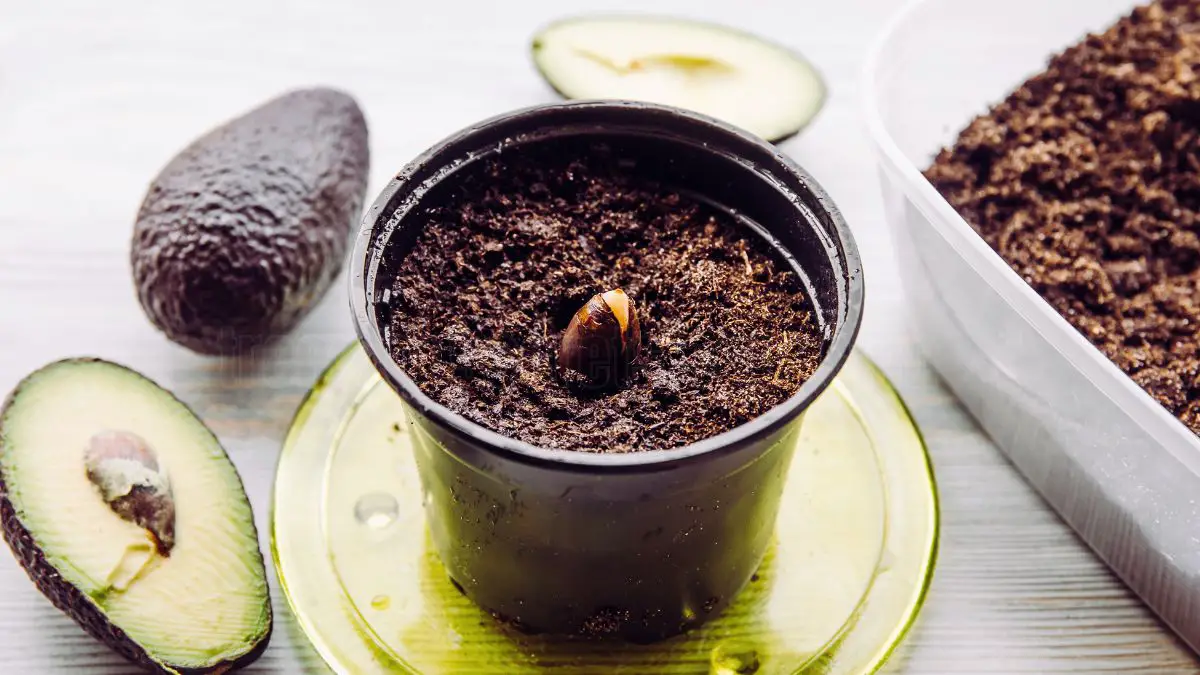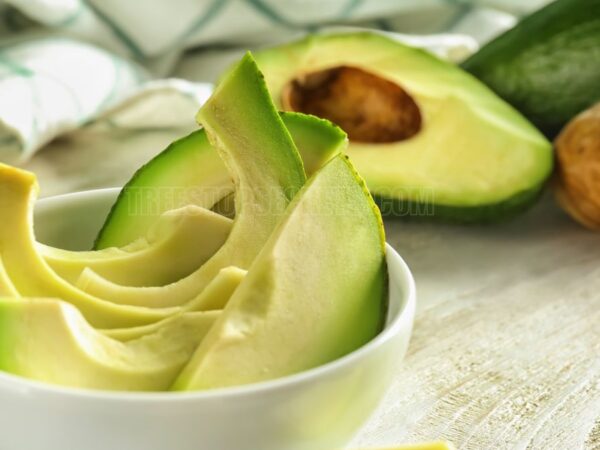Avocado seed germination is the process of sprouting the seed of an avocado fruit to produce a new avocado plant. This step usually takes two to six weeks and is an easy process using inexpensive methods.
To start, you’ll want to wash the seed really well. Next, put it in water or soil, ensuring that it receives proper warmth and moisture. The seed needs certain conditions to really take off, particularly a temperature range of 65 to 85 degrees Fahrenheit.
Once you know these simple things, anybody can grow an avocado plant at home! Our guide provides easy, illustrated, step-by-step directions to ensure your avocado seed will be sprouting in no time. Take pride in growing your own life plant from start to finish!
Key Takeaways
- Select healthy avocado seeds without mold or visible damage for the best results when germinating. The bigger the seed, the better the chance of success, so choose the biggest seeds you can find.
- Determine if your avocados are ready by looking at their skin texture and the firmness of the fruit. By testing avocados at various ripeness stages, you can figure out the ideal quality of avocado seed for germination.
- Keep your seeds in a warm and very humid environment. Providing plenty of light will encourage strong growth, once they begin to break through.
- Grow them using proven germination techniques like the toothpick water method or direct planting in loose, well-draining soil. Keep an eye on the water level and amount of light your seed is receiving to give it its best chance at germination!
- Once your pit sprouts, create a watering routine and pot it properly to help it flourish. Controlling humidity and light exposure will be very important in the next stage of your seedlings’ growth.
- Keep abreast of best practices and innovations in the field of avocado production. Discussing your experiences with other gardeners can help deepen your understanding of the process and help you refine your techniques over the years.
Understanding Avocado Seed Germination
There are three important elements to germinating avocado seeds that you need to get right. Understanding these traits and environmental requirements can significantly enhance the germination rate of your indoor avocado tree.
What Makes a Good Avocado Seed?
What makes a good avocado seed? Avoid seeds that have any signs of mold, damage or rot, all of which decrease germination rates. Surprisingly, the larger avocado pits have a greater chance of success, so they’re the better option.
Hass avocado seeds are especially difficult to germinate. They frequently require additional care to foster their successful germination.
How Ripeness Affects Germination Success
The ripeness of your avocado has a direct influence on seed viability. Check the color of the skin and check the firmness of the fruit. The fruit should give a little when pressed.
Planting overripe or underripe seeds will result in sad results, so it’s worth experimenting with different levels of ripeness. By some frequent trial and error, you can figure out what works best for your particular seeds under particular conditions.
Environmental Factors for Successful Germination
Providing the ideal conditions is key. Providing the best conditions for germination is crucial. Here’s what it takes for avocado seeds to germinate successfully: water, heat, and oxygen.
A warm temperature encourages quicker root growth, and keeping soil or water evenly moist aids the germination process. Ensuring the seed gets enough light will promote strong, healthy growth.
Techniques including the water and toothpick method or the paper towel method can be used to germinate seeds. It usually takes two to four weeks for the seeds to start cracking, and more than anything, it’s important to monitor them every four days.
When the root is about three inches long, your seed is ready to be planted!
Methods for Germinating Avocado Seeds
There are multiple ways to grow avocado seeds, and each method comes with its own set of benefits. Among avocado enthusiasts, the water method and the soil method are the most notorious for germination. Evaluating these techniques based on ease and success rates will make it easier for everyone to cultivate a beautiful avocado tree.
1. Water Method for Sprouting
The toothpick method is the most common method of germinating avocado seeds. Follow these steps:
- Select a ripe avocado seed and clean it.
- Using three toothpicks, pierce the seed in a downward angle.
- Place the flat end of the seed in a glass of water, just the bottom touching the water’s surface.
- Replace the water regularly to keep it fresh.
Keeping an eye on the water level is important. The seed should be kept totally submerged to get the moisture it needs. To ensure the best root development possible, keep the seed in a warm, bright environment to encourage growth.
2. Soil Method for Planting
For the soil method, you will want to use a good quality, well-draining soil. Lightly water it and keep it in a warm, sunny location, preferably around 60-70 degrees Fahrenheit.
Make sure to monitor the soil’s moisture so you’re not overwatering your seed, which can lead to root rot.
3. Innovative Techniques to Enhance Germination
Creative methods, such as the baggie technique, keep seeds wrapped in a moist paper towel to provide humidity. You can soak the seed in water for 24 hours to encourage quicker root development.
A germination plate is an excellent way to give controlled, humid conditions that will improve your germination success.
Care Requirements for Avocado Seedlings
Protecting avocado seedlings after they germinate is crucial for their development into a beautiful avocado tree. After germination, there are several key care requirements that will help your avocado seedling thrive, including proper watering practices, potting procedures, and root pruning methods, ensuring healthy growth and good fruit production.
Watering Needs for Healthy Growth
Somewhat surprisingly, determining a watering schedule is one of the most important aspects of watering your new avocado! Ideally, they should be watered whenever the top inch of soil is dry to the touch. Signs of underwatering are wilting leaves, and overwatering will cause yellowing and leaf drop.
Besides ensuring proper drainage, utilizing shallow, well-draining pots is key. It protects against water pooling and root decay, ensuring a thriving plant.
Potting Guidelines for Young Plants
Choosing the correct potting size is important to make room for the developing root structure. As seedlings outgrow their homes, transferring them to bigger pots filled with new potting mix gives developing roots space and nutrients to grow.
Check that your pots have plenty of drainage holes. This will allow water to flow through freely and avoid root rot, an important factor for avocado seedlings that prefer well-draining soil. Mixing perlite or sand into the potting mixture will help with drainage.
Pruning Tips for Strong Development
For a fuller, bushier plant, pinch back the tips of developing avocado seedlings. Pruning away dead and damaged leaves immediately improves your plant’s health.
Pruning to remove surplus foliage helps you maintain your indoor plant to a size that fits your available space.
Optimal Growing Conditions in the United States
Growing large avocado trees from seed requires a lot of sunlight and space, making it essential for avocado enthusiasts to understand the ideal climate and light requirements for cultivating a beautiful avocado tree indoors.
Ideal Temperature Ranges for Avocado Plants
Avocado trees prefer temperatures between 60°F and 85°F. These are the conditions that promote optimal growth, helping plants to thrive. Young plants are especially sensitive and should be defended against frost, which can limit their growth.
Extreme heat places stress on avocado plants. In order to be successful growing avocados indoors, try your best to recreate the perfect outdoor environment indoors. This will go a long way toward making sure your plants get the warmth they crave.
Light Preferences and Placement Tips
Light is one of the most important growing conditions to consider when planting avocados. These plants are sun-lovers, needing at least six hours of direct sunlight each day for strong, healthy blooms.
This means putting your avocado plants in front of windows that provide plenty of sunshine. Rotating pots regularly allows all sides to get equal exposure, leading to fuller growth.
In instances where natural sunlight is insufficient—particularly during winter months—using grow lights can effectively supplement the light needs of the plants.
Humidity Levels and Their Impact
Keeping humidity levels in the range of 40-60% goes a long way in helping avocado plants thrive. The best way to increase humidity for indoor plants is to use a humidifier or place pebble trays filled with water around your plants.
Keep a close eye on humidity levels to avoid shocking your avocado seedlings. This enables them to flourish in a healing space.
Troubleshooting Common Germination Issues
Germinating avocado seeds can be a fun yet intimidating process for avocado enthusiasts; understanding the usual culprits and how to fix them is key to getting your beautiful avocado tree sprouted.
Identifying and Overcoming Obstacles
Not germinating properly One common complaint is about white mold or black rot developing on seeds. If you see some fuzzy mold-like growth or a dark floating discoloration, it’s important to act quickly.
Discard the spoiled seeds and make sure the seeds that you keep are stored in an area that has good air flow. Lack of light or moisture will quickly set back development. Make sure your seeds are getting enough light, but not too much, and watch to keep things moist without going overboard.
Finally, take stock of the environment in which you are germinating seeds. Temperature and humidity are very important factors that play a huge role in the germination process.
Practical Solutions for Common Problems
Overwatering is another common pitfall. To remedy this, water less often and make sure your soil is well drained. Avoid over-watering.
Make sure to use pots with drainage holes so water doesn’t pool at the bottom. If you’re dealing with underwatering, set up a regular watering schedule while making sure to monitor the soil moisture frequently.
If your seeds are receiving an overdose of sunlight, relocate to a shadier spot. This will go a long way to avoiding stress from extreme heat.
Monitoring Seed Growth Progress
Maintaining a detailed journal is an invaluable practice. Keep a log of your avocado seeds’ germination timeline and milestones to monitor their progress.
Documenting their growth with photos will give you a visual record to refer to for each stage of their development. Monitor seed growth progress.
Continuously check on roots and shoots to confirm their health and proper development.
Transitioning from Germination to Growth
Once the avocado seeds have germinated, we move on to helping the seedlings thrive into a beautiful avocado tree. Our mission with these ideas is to ensure they transition into strong and healthy development, adapting your nurturing practices to suit the developing requirements of these tender plants, allowing them to flourish in their surroundings.
Timing for Transplanting Sprouted Seeds
Getting the timing right for transplanting sprouted seeds is of the utmost importance. Typically the seedlings are ready when they’ve established a strong healthy root system and are at least 6 inches tall. A soft touch is key here to not injure the fragile roots in transit.
Choosing the right potting mix—one that is high in organic matter and well-draining—will encourage healthy growth after transplanting.
Modifications in Care Post-Germination
During this stage of development, the watering frequency will need to be increased, as seedlings will need more moisture to support their growth. Introducing a diluted liquid fertilizer, once seedlings have developed to a height of 6 inches, ensures that the plants receive key nutrients as their growth continues.
Vigilance against pests and diseases is imperative during this stage as young, delicate plants are more highly susceptible.
Encouraging Vigorous Growth
Allowing plenty of room for roots is one of the most important factors in encouraging vigorous growth. Transitioning to larger pots as the seedlings become plants gives the roots space to spread out and soak in nutrients.
Using pruning methods to promote a more bushy growth habit and denser, healthier foliage may reduce infections. Avocado plants prefer bright well-lit spaces. Keeping uniform light and temperature environments is essential to their success.
Exploring Emerging Trends in Avocado Cultivation
Now that avocado cultivation is more popular than ever, innovative practices and scientific advancements are changing the way avocado enthusiasts and growers alike approach seed germination. This section explores some of the new techniques and knowledge that can improve the propagation of a beautiful avocado tree.
Experimental Practices for Home Gardeners
Home gardeners are testing all sorts of different germination methods. They’re employing hydroponic systems and controlled environments, which notoriously yield superior crops when compared to soil methods.
Through trialling these new methods, they are discovering successful ways to improve both seed viability and growth rates. Residential aficionados can spare pricey mistakes by bouncing ideas off one another in social networks or through gardening organizations.
They help each other troubleshoot issues and they celebrate each other’s successes. Understanding the trial and error process helps identify approaches that work best to match each gardener’s unique style. It encourages a much more tailored style of avocado growing.
Scientific Insights on Improving Germination Rates
Research has given us a better understanding of the biology behind avocado seeds and what conditions are best for germination. Scientific evidence shows that temperature, moisture levels, and pre-soaking methods play a crucial role in determining success rates.
By incorporating this research, growers will be better equipped to adapt their germination techniques, leading to greater success from their efforts. Working alongside local nurseries allows for advancement of the latest knowledge and innovations, allowing for constant enhancement of cultivation techniques.
Future Directions in Avocado Propagation
Future directions in avocado propagation are promising. Moving forward, innovations in grafting and hybridization are yielding the potential for increased fruit production as well as disease resistance.
Improving propagation through technology has an equally important role, providing tools to monitor conditions under which the plants are growing. Participating in local or state community gardening efforts encourages valuable peer-to-peer learning and resource sharing that helps everyone have a better experience growing avocados.
Conclusion
Germinating avocado seeds offers a fun and rewarding experience. Using the proper techniques and attention, you’ll see your seeds grow into flourishing greenery. Concentrate on the basics such as picking a healthy seed and giving it moisture and warmth. Listen to your seedlings and give them what they need as they develop. Keep in mind, a little patience goes a long way. When things don’t go as planned, our troubleshooting section will assist you in getting your project back on course. So go ahead and take on this adventure, and relish every moment spent cultivating your avocado seedlings. Whether you want to grow your own avocados or just want to do something fun and different, get started now! Assemble your materials, learn the process, and get ready to start this fun and rewarding journey to growing your own avocados.
Frequently Asked Questions
What is the best way to germinate an avocado seed?
The most popular method for growing an indoor avocado tree involves suspending the pit in water with toothpicks. Place the avocado seed in a glass of water with the narrow, pointed end facing up, ensuring the bottom half is submerged. Change the water weekly for best results.
How long does it take for an avocado seed to germinate?
An avocado seed will typically sprout roots and a beautiful avocado tree stem within 2 to 8 weeks, depending on factors like temperature and humidity.
What temperature is ideal for germinating avocado seeds?
The ideal temperature for avocado seed germination, particularly for an indoor avocado tree, is around 70°F to 80°F, as warmth aids in faster germination.
How often should I water avocado seedlings?
Water seedlings whenever the top inch of soil is dry to the touch, ensuring that your pot has good drainage to avoid overwatering and rotting out your avocado tree seed.
Can I grow an avocado tree indoors?
Can I grow an indoor avocado tree? Just be sure to give them enough light and humidity for the best growing conditions to thrive.
Why is my avocado seed not germinating?
The most common reasons for poor germination rates are not enough warmth, insufficient moisture, or using an old avocado pit. Providing ideal conditions is crucial to promote a beautiful avocado tree.
When should I transplant my avocado seedling?
Transplant your seedlings into a big enough pot with good drainage once they’re at least 6 inches tall and have a few leaves, ensuring a healthy indoor avocado tree for further growth.
Image Source: Paid image from CANVA





